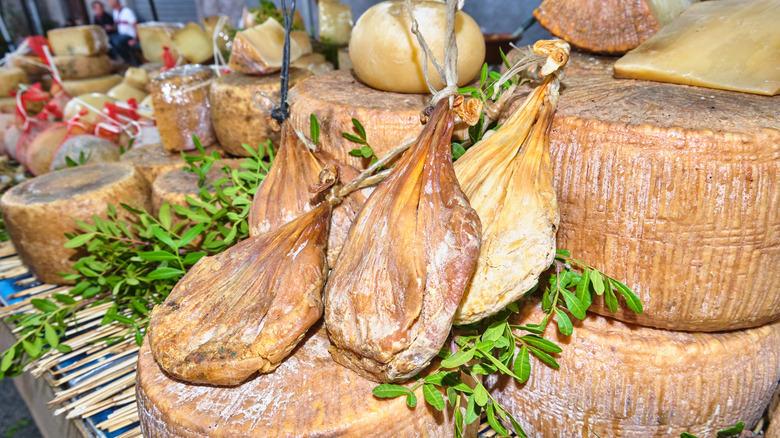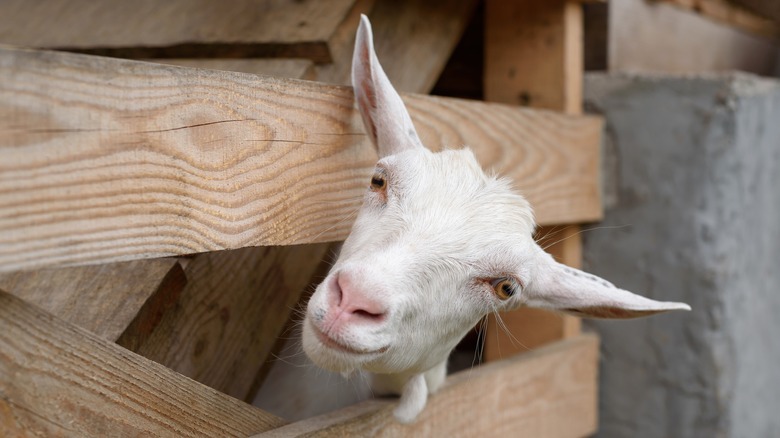The Age-Old Method Used To Make Callu De Cabrettu Cheese
A world without cheese is a world we frankly don't want to live in. It's terrible to imagine a life without gooey fresh mozzarella, sharp cheddar cheese, or buttery baked brie. We wouldn't have several of our favorite dishes, such as pizza and casseroles, and pasta would be positively boring. But believe it or not, the National Historic Cheesemaking Center says that cheese making is only 8 to 10,000 years old and may have been accidentally covered when milk was held in containers made from animal stomachs, which caused the milk to separate. Say a big thank you to enzymes!
Once this discovery was made, ancient peoples began experimenting with many different ways to make cheese, using milk from cattle, goats, and sheep, and inventing various production methods depending on what was available to local farmers. Among the few kinds of cheese made centuries ago but still manage to capture the taste buds of food lovers is the callu de cabrettu.
It comes from the stomach lining of young goats
Callu de cabrettu is one of the world's oldest cheeses, invented in Sardinia, Italy, and made using the most ancient method in the book: animal stomach. According to Suigi Guffanti, the cheese is incredibly hard to come by, produced in limited amounts by Sardinian shepherds, and is locally eaten (stomach and all) on slices of bread. The cheese comes from and is harvested from the stomach lining of young goats, which have been feeding on their mother's milk. They are then hung in a shaded and highly ventilated space until the stomach acids convert the milk to cheese (via Atlas Obscura).
We'll admit it doesn't sound like the most appetizing way to make your food, but it is how humans originally made cheese before we had fancy machines to do all the hard work. These Sardinian shepherds are simply keeping with tradition. Greek City Times says that because the cheese is served directly from the stomach, it can be quite pungent in flavor yet creamy in consistency. On the latter, it can be "firm and crumbly if it has been hanging for a while," per Atlas Obscura.

